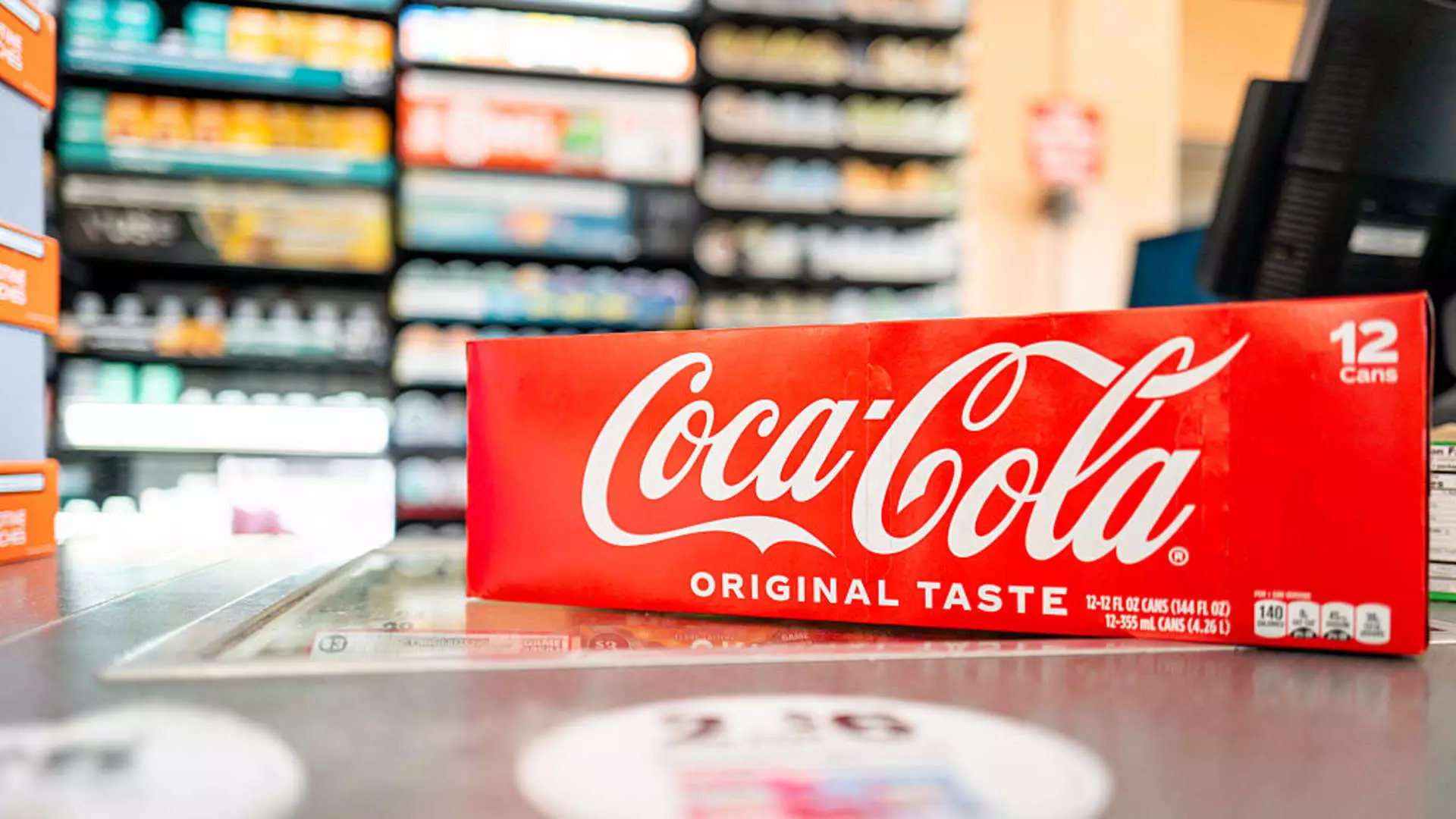Despite Coca-Cola’s assertions of surpassing analyst expectations with modest gains, a deeper analysis reveals a more precarious situation beneath the surface. The reported 1% increase in revenue and a modest rise in organic revenue masks a troubling decline in core demand. The global unit case volume, a meaningful indicator of true product consumption, contracted by 1%, signaling waning consumer enthusiasm worldwide. While the company’s executive remarks highlight pockets of improvement—particularly in Europe and some parts of the U.S.—these are more reflective of strategic adjustments rather than genuinely resilient market fundamentals.
This environment where demand is slipping in key regions exposes a critical weakness. In a time of economic uncertainty and inflationary pressures, consumers are tightening their budgets, and flagship products like Coke are no longer guaranteed staples. The brand’s reliance on a broad yet fragile consumer base makes it vulnerable to shifts in disposable income and changing tastes. Behind the veneer of growth lies the sobering reality: Coca-Cola is merely treading water, attempting to engineer favorable metrics without addressing the underlying decline in global beverage consumption.
Market Volatility and Consumer Confidence: The Real Culprits
Coca-Cola’s mixed regional performance reflects the broader economic turbulence affecting many multinational corporations. The notable decline in Latin American and Asia-Pacific volumes—down 2% and 3%, respectively—indicates that turbulence in emerging markets is not only persistent but intensifying. These regions have historically been growth engines for the brand, but now, despite strategic marketing and product innovation, they are showing signs of fatigue. It implies that geopolitical tensions, inflation, and currency fluctuations are undermining consumer confidence, particularly in lower-income groups that are most sensitive to price hikes.
The company’s acknowledgment of social-media-related incidents that temporarily dampened sales in the U.S. exposes a troubling complacency. While Coca-Cola claims to have moved past the rumors, it underscores how fragile its reputation can be in today’s hyper-sensitive environment. Misinformation, whether justified or not, swiftly influences purchasing decisions, especially when consumer trust already faces challenges from health debates and shifting preferences.
Furthermore, Coca-Cola’s attempt at diversification—through its water, sports drinks, and coffee segments—has produced mixed results, with declines in some categories offset by flat or modest growth in others. Such a patchwork performance suggests a lack of clear strategic mastery. The water and sports segments, highly competitive and often dictated by health trends, are proving difficult to grow in a mature market where margins are thin. This points to a fundamental issue: Coca-Cola is essentially struggling to sustain its core business while dabbling across categories without a decisive winning strategy.
The Illusive Promise of Innovation and the Cost of Brand Dependency
The announced plan to reintroduce a cane sugar version of Coca-Cola in the U.S. appears more like a defensive move aimed at appeasing nostalgic consumers rather than a path to long-term growth. It indicates that traditional formulations are losing their allure amid a shifting consumer landscape that favors health-conscious and eco-friendly options. The emphasis on product innovation is not enough to offset the decline in demand for standard sodas, which face stiff competition from healthier alternatives and private labels.
The company’s projected 3% growth in earnings per share and 5-6% organic revenue increase for 2025 are ambitious targets that rest on shaky foundations. They ignore the broader risks: persistent inflation, declining volumes, and the possibility that consumer preferences will continue to shift away from sugary soft drinks altogether. Coca-Cola’s reliance on its iconic brand, while historically a strength, now risks becoming a liability if it fails to adapt swiftly to the evolving marketplace.
It’s also worth criticizing Coca-Cola’s complacency—its slow response to market shifts and overconfidence in its brand strength can be dangerous. In an era where consumers increasingly prioritize health, sustainability, and authenticity, Coca-Cola’s traditional approach seems increasingly out of touch. If the company does not innovate beyond superficial product variants and address the core issues—declining demand, shifting preferences, and geopolitical headwinds—it risks being overshadowed by more agile competitors.
Coca-Cola’s recent financial report paints a picture of a company facing significant challenges under the guise of modest growth. The superficial optimism masks the reality that its business model is fundamentally under threat. Without bold strategic reforms and a genuine understanding of changing consumer values, Coca-Cola’s supposed rebound risks being short-lived and ultimately hollow.

